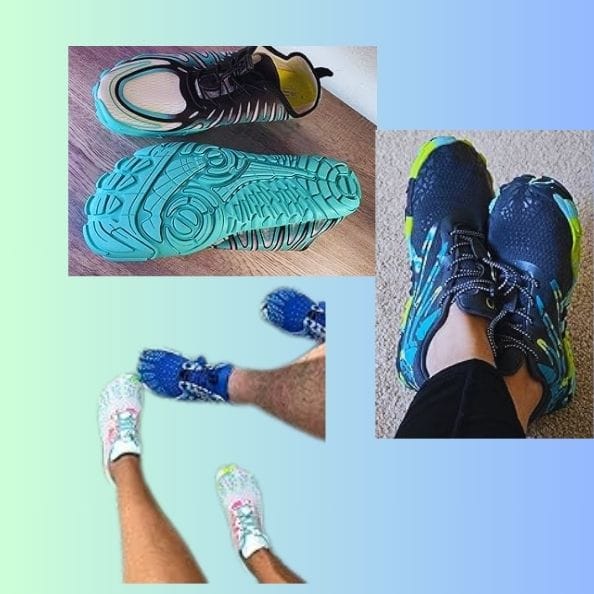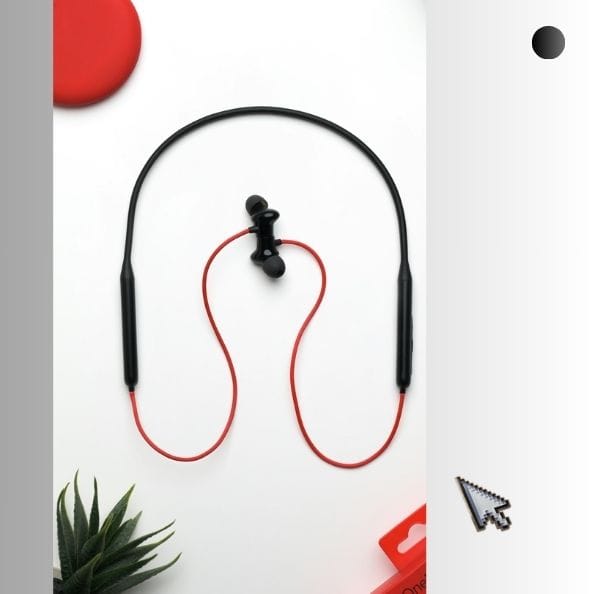Key Takeaways:
- Barefoot shoes mimic the natural shape and movement of the foot.
- They offer numerous health benefits, including improved posture and reduced injury risk.
- Choosing the right pair involves considering factors like fit, material, and activity type.
What Are Barefoot Shoes?
Barefoot shoes are a type of minimalist footwear designed to mimic the natural shape and movement of the human foot.
Unlike traditional shoes, which often have thick soles and arch support, barefoot shoes have thin, flexible soles that allow for a more natural walking or running experience. Imagine walking on a sandy beach; your feet spread out, your toes grip the ground, and you feel every contour beneath you. That's the essence of barefoot shoes.
These shoes are often characterized by their wide toe box, zero-drop sole (meaning the heel and forefoot are at the same level), and lightweight construction. They aim to provide a more natural gait, encouraging the muscles in your feet and legs to work as they were intended.
This can lead to improved balance, better posture, and a reduced risk of injuries.
The History of Barefoot Shoes
The concept of barefoot shoes isn't new; it dates back to ancient civilizations. Early humans walked and ran barefoot or with minimal footwear made from natural materials like animal hides.
Fast forward to the 1960s, and the idea of minimalist running gained traction with the publication of "Born to Run" by Christopher McDougall. The book highlighted the benefits of running barefoot, sparking a movement towards minimalist footwear.
In the early 2000s, companies like Vibram and Merrell began producing shoes specifically designed to mimic the barefoot experience. These early models were often met with skepticism, but as more research emerged supporting the benefits of barefoot running and walking, the popularity of these shoes grew.
Today, barefoot shoes are a staple in the footwear market, with numerous brands offering a variety of styles and designs.
Health Benefits of Barefoot Shoes
One of the most significant benefits of barefoot shoes is their potential to improve foot health. Traditional shoes often constrict the feet, leading to issues like bunions, hammertoes, and plantar fasciitis.
Barefoot shoes, with their wide toe box and flexible soles, allow the feet to move naturally, reducing the risk of these common foot problems.
Additionally, barefoot shoes can improve posture and alignment. When you wear shoes with a raised heel, it can throw off your body's natural alignment, leading to issues like back pain and poor posture.
Barefoot shoes, with their zero-drop sole, encourage a more natural alignment, which can help alleviate these issues. Moreover, the increased sensory feedback from the ground can improve balance and proprioception, reducing the risk of falls and injuries.
Common Misconceptions About Barefoot Shoes
One common misconception about barefoot shoes is that they lack support and cushioning, making them uncomfortable or even harmful ... However, the idea behind barefoot shoes is to allow your feet to function as they were designed, without the need for artificial support.
*While it may take some time to adjust, many people find that barefoot shoes are incredibly comfortable once they get used to them.
Another misconception is that barefoot shoes are only for runners or athletes. While they are popular among these groups, barefoot shoes can benefit anyone, from office workers to hikers. The key is to start slowly and allow your feet to adapt to the new experience.
*Over time, you'll likely find that barefoot shoes offer a more comfortable and natural way to move.
How to Transition to Barefoot Shoes
Transitioning to barefoot shoes isn't as simple as swapping out your old sneakers.
Your feet and legs need time to adjust to the new way of walking or running. Start by wearing your barefoot shoes for short periods, gradually increasing the time as your muscles adapt.
*This gradual approach can help prevent injuries and make the transition smoother.
It's also essential to pay attention to your body's signals. If you experience pain or discomfort, take a break and allow your body to recover. Stretching and strengthening exercises for your feet and legs can also help ease the transition.
*Remember, the goal is to move naturally and comfortably, so take your time and listen to your body.
Choosing the Right Barefoot Shoes
When choosing barefoot shoes, there are several factors to consider.
- First, look for a wide toe box that allows your toes to spread out naturally. This can help improve balance and reduce the risk of foot problems.
- Next, consider the sole thickness. While barefoot shoes typically have thin soles, some models offer slightly thicker options for added protection and comfort.
- Material is another important factor. Look for shoes made from breathable, flexible materials that allow your feet to move naturally.
- Finally, consider the type of activity you'll be doing. Different barefoot shoes are designed for various activities, from running and hiking to casual wear. Choose a pair that suits your needs and preferences.
Popular Brands and Models
Several brands have made a name for themselves in the barefoot shoe market.
- Vibram, known for its FiveFingers line, offers a unique design with individual toe pockets, providing a glove-like fit.
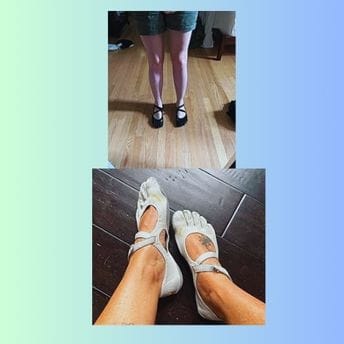
- Merrell's Barefoot series is another popular choice, offering a range of styles for different activities.
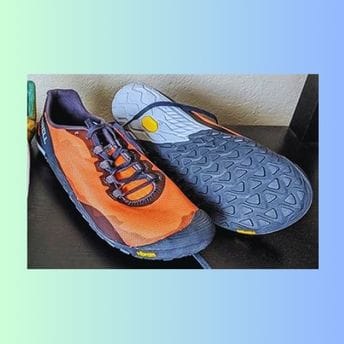
- Xero Shoes and Vivobarefoot are also well-regarded brands, known for their high-quality, minimalist designs.
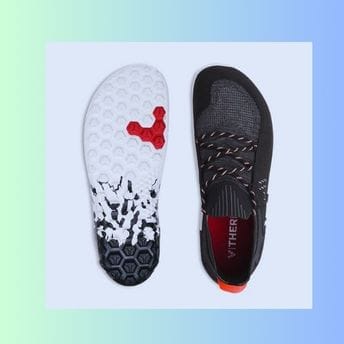
Each brand offers a variety of models, so it's worth trying a few different options to find the best fit for your needs.
Whether you're looking for a shoe for running, hiking, or everyday wear, there's likely a barefoot shoe that will meet your requirements.
Real-Life Success Stories
Many people have experienced significant benefits from switching to barefoot shoes.
Take John, for example, a long-time runner who struggled with chronic knee pain. After transitioning to barefoot shoes, he noticed a marked improvement in his running form and a reduction in pain.
Similarly, Sarah, an office worker, found that wearing barefoot shoes helped alleviate her chronic back pain and improved her posture.
These success stories are not uncommon. Many people find that barefoot shoes offer a more comfortable and natural way to move, leading to improved health and well-being.
*While the transition may take some time, the benefits can be well worth the effort.
Potential Drawbacks and Considerations
While barefoot shoes offer many benefits, they may not be suitable for everyone.
People with certain foot conditions, like severe flat feet or plantar fasciitis, may find that barefoot shoes exacerbate their issues.
It's always a good idea to consult with a healthcare professional before making the switch, especially if you have existing foot problems.
Additionally, barefoot shoes may not provide enough protection in certain environments. If you're hiking on rough terrain or working in a hazardous environment, you may need a shoe with more protection and support.
However, for everyday activities and less demanding environments, barefoot shoes can be a great choice.
FAQ
Q: Are barefoot shoes suitable for everyone?
A: Barefoot shoes can benefit many people, but they may not be suitable for everyone, especially those with certain foot conditions.
It's always a good idea to consult with a healthcare professional before making the switch.
Q: How long does it take to transition to barefoot shoes?
A: The transition period can vary depending on the individual. It's essential to start slowly and gradually increase the time you spend in barefoot shoes.
This approach can help prevent injuries and make the transition smoother.
Q: Can I wear barefoot shoes for all activities?
A: While barefoot shoes are versatile and can be used for various activities, they may not provide enough protection in certain environments.
Consider the type of activity and environment when choosing barefoot shoes to ensure they meet your needs.
Summary
Barefoot shoes offer a unique and natural way to move, providing numerous health benefits and a more comfortable experience.
While they may not be suitable for everyone, many people find that barefoot shoes improve their posture, reduce pain, and enhance their overall well-being. By choosing the right pair and transitioning gradually, you can enjoy the benefits of barefoot shoes and experience a more natural way to move.
Disclaimer. When you purchase through links on our site, we may earn an affiliate commission (that's how we stay in business). FirstFewFinds may use affiliate links to products and services on retailer sites for which we can receive compensation if you click on those links or make purchases through them. We hope you find the list of our first few finds useful and helpful. Each product on our list has been carefully chosen by our writers and all opinions are our own. Check your choices and enjoy finding exactly what you need!


